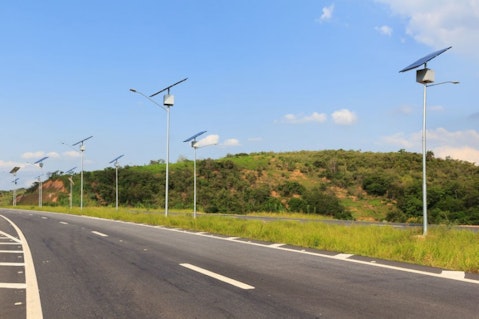Feasibility of the project
Now, this is where it gets interesting. Contrasting opinions pertaining to the implementation of the project have been presented, with most being against. According to a professor of urban planning at the University of Michigan, Jonathan Levine, it is not a feasible project, mainly due to the bureaucratic approach of the government, with the local, state and federal authorities all needing to be involved in the implementation of new road technology.
However, the main issue is the cost, which is astronomical, to say the least. Sebastian Anthony, a writer for ExtremeTech, completely derided the idea of the national road system being overhauled and replaced by solar road panels. They estimated the cost at an astounding $56 trillion. This figure was arrived at by using the cost provided by the Brusaws where a 12×12 foot section costs around $10,000. To put that in perspective, the United State’s GDP is a paltry 17.9 trillion.
Hence, there is little chance that this technology will be implemented unless the costs are reduced dramatically. And it is important to consider that there is little doubt that costs will fall as further technological advancements are made. After all, a 16 MB memory card cost over $350 a couple of decades ago. Now, a 4 GB RAM will set you back just over $5. That is a decrease of 99.75 percent in the price, proving my point that cost cutting is almost guaranteed as innovation in technology continues, which may just be the push needed to make this idea a reality.
The main reason behind the heavy costs is the fact that the solar cells have to be manufactured by hand. Once again, this is technology still in relative infancy. Once breakthroughs are made and the solar cells are manufactured by machines, large-scale implementation will be significantly more feasible.
Some other issues include the cars blocking the solar panels on the road from accessing the sunlight, thereby reducing efficiency in the creation of energy, which will already be hampered due to the solar panels being fixed and not adjustable.
The funny thing is, while solar road panels are being pursued primarily because they are an environmentally friendly alternative to produce energy, it is thought that they could actually have a negative impact on the environment. High costs are being incurred in this project, which could be utilized for other more viable projects. In addition, in the case of a solar bike path in the Netherlands, the epoxy top coating layer and the reinforced concrete slabs will create a detrimental effect on the environment, while the electricity produced will be quite low in contrast. Hence, the overall impact on the environment may also raise concerns that this technology is not viable and other alternatives may be considered in its place, such as using coils on the road to power electric cars via vibrations, which are then converted into electric energy.
Safety is another important factor that is still not guaranteed with solar roads. Not only do the panels have to be strong enough to bear the weight of the cars and heavy traffic, the material with which the panels will be covered should provide significant traction to cars which will otherwise simply slide over the roads, causing massive traffic accidents.
The supply of material proves to be another dilemma as large circuit boards are required to be placed on the roads, the acquisition of which has proven to be difficult, mainly because most companies have reduced the size of circuit boards. Hence, the myth of solar road panels and solar roadways may have been busted rather than be considered a great idea.

Copyright: jantroyka / 123RF Stock Photo




